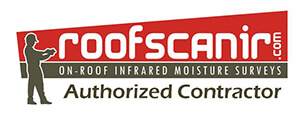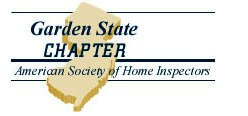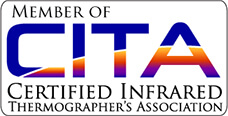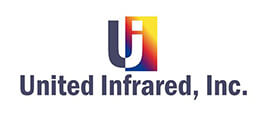NFPA 70B Infrared Electrical Inspections
NFPA 70B Recommends Infrared Inspection of Electrical & Mechanical Equipment
11.17 Infrared Inspection.
11.17.1 Introduction.
Infrared inspections of electrical systems are beneficial to reduce the number of costly and catastrophic equipment failures and unscheduled plant shutdowns.
11.17.1.1
Infrared inspections should be performed by qualified and trained personnel who have an understanding of infrared technology, electrical equipment maintenance, and the safety issues involved. Infrared inspections have uncovered a multitude of potentially dangerous situations. Proper diagnosis and remedial action of these situations have also helped to prevent numerous major losses.
11.17.1.2
The instruments most suitable for infrared inspections are of the types that use a scanning technique to produce an image of the equipment being inspected. These devices display a picture in which “hot spots” appear as bright or brighter spots.
11.17.1.3
Infrared surveys can be accomplished either by in-house teams or by a qualified outside contractor. The economics and effectiveness of the two alternatives should be carefully weighed. Many organizations find it preferable to obtain these surveys from qualified outside contractors. Because of outside contractors’ more extensive experience, their findings and recommendations are likely to be more accurate, practical, and economical than those of a part time in-house team.
11.17.1.4
Infrared surveys of electrical systems should not be viewed as replacement for visual inspections. Visual inspections or checks are still required on lightly loaded circuits or on circuits not energized or not carrying current at the time of the infrared survey (e.g., neutral connections).
21.17.2 Advantages of Infrared Inspections.
Infrared inspections are advantageous to use in situations where electrical equipment cannot be de energized and taken out of service or where plant production is affected. They can reduce typical visual examinations and tedious manual inspections and are especially effective in long-range detection situations.
21.17.2.1
Infrared detection can be accurate, reliable, and expedient to use in a variety of electrical installations. More important, it can be relatively inexpensive to use considering the savings often realized by preventing equipment damage and business interruptions.
21.17.2.2
Infrared inspections are considered a useful tool to evaluate previous repair work and proof test new electrical installations and new equipment still under warranty.
21.17.2.3
Regularly scheduled infrared inspections often require the readjustment of electrical maintenance priorities as well as detect trends in equipment performance that require periodic observation.
21.17.3 Disadvantages.
There are some disadvantages to individual ownership of certain types of equipment. Scanning-type thermal imaging devices can be costly to purchase outright. Training is recommended for persons who operate scanning type thermal imaging instruments.
21.17.3.1
Infrared inspections require special measures and analysis. Equipment enclosed for safety or reliability can be difficult to scan or to detect radiation from within. Special precautions, including the removal of access panels, might be necessary for satisfactory measurements. Weather can be a factor in the conduct of a survey of electrical systems located outdoors, for example, overhead electric open lines and sub stations. Rain and wind can produce abnormal cooling of defective conductors and components. Because the reflection of sun rays from bright surfaces can be misread as hot spots, infrared work on outdoor equipment might have to be performed at night. That, in turn, presents a problem, because electrical loads usually are lower at night, and the faulty connections and equipment might not overheat enough to enable detection. Shiny surfaces do not emit radiation energy efficiently and can be hot while appearing cool in the infrared image.
21.17.3.2
The handling of liquid nitrogen, argon, and other liquefied gases with their inherent hazards is a disadvantage of some infrared testing equipment.
21.17.4 Desirable Operational Features.
The equipment dis- play should be large and provide good resolution of hot spots. The equipment should provide color or black and white photographs to identify the exact location of the hot spot. The unit should be portable, easy to adjust, and approved for use in the atmosphere in which it is to be used. It should also have a cone of vision that gives enough detail to accurately identify the hot spot.
21.17.4.1
The unit should be designed so that the operator knows the degree of accuracy in the display. There should be easily operated checks to verify the accuracy of the display.
21.17.5 Inspection Frequency and Procedures.
Routine infrared inspections of energized electrical systems should be performed annually prior to shut down. More frequent infrared inspections, for example, quarterly or semiannually, should be performed where warranted by loss experience, installation of new electrical equipment, or changes in environmental, operational, or load conditions.
21.17.5.1
All critical electrical equipment as determined by Section 6.3 should be included in the infrared inspection.
21.17.5.2
Infrared surveys should be performed during periods of maximum possible loading but not less than 40 percent of rated load of the electrical equipment being inspected. The circuit-loading characteristics should be included as part of the documentation provided in 21.17.5.4.
21.17.5.3
Equipment enclosures should be opened for a direct view of components whenever possible. When opening the enclosure is impossible, such as in some busway systems, internal temperatures can be higher than the surface temperatures. Plastic and glass covers in electrical enclosures are not transparent to infrared radiation.
21.17.5.4
Infrared surveys should be documented as outlined in 6.5.2 and Section 21.8.
21.17.5.5
The electrical supervisor should be immediately notified of critical, impending faults so that corrective action can be taken before a failure occurs. Priorities should be established to correct other deficiencies.
21.17.5.6
Section 9 and Table 10.18 of the NETAMaintenance Testing Specifications for Electrical Power Distribution Equipment and Systems suggest temperature benchmarks similar to those in the following list. The temperature differences in this list denote differences from the normal referenced temperature. The normal referenced temperature is determined by a qualified technician.
(1) Temperature differences of 1°C to 3°C indicate possible deficiency and warrant investigation.
(2) Temperature differences of 4°C to 15°C indicate deficiency; repairs should be made as time permits.
(3) Temperature differences of 16°C and above indicate major deficiency; repairs should be made immediately







